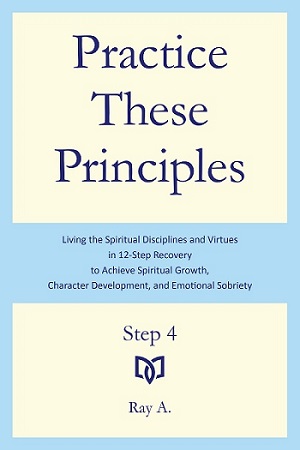
“Next we launched on a course of vigorous action,” recounts the Big Book as it transitions from Step 3 to Step 4 and begins to lay out AA’s unique approach to an ancient practice, the discipline of self-examination. Our decision to turn our will and our lives over to the care of God “was a vital and a crucial step,” for it laid the foundation of the remaining Steps. But we need to carry it out. It may have “little permanent effect unless at once followed by a strenuous effort to face, and be rid of, the things in ourselves which had been blocking us” (pp. 63–64). What are these things? They are the things of “self-will” (p. 71). What are they blocking us from? They are blocking us from “Him” (id.). For “[o]ur liquor was but a symptom” of a larger spiritual illness. “So we had to get down to” the material as well as the spiritual “causes and conditions” (p. 64).
“Therefore, we started upon a personal inventory,” continues the Big Book narrative, borrowing from a business practice to explain the need for a spiritual one. If a business doesn’t take regular inventory, it usually goes broke. A commercial inventory is a practical affair, “a fact-finding and fact-facing process.” Its purpose is to “discover the truth about the stock-in-trade” (p. 64), for instance, what goods are damaged or unsalable and must therefore be gotten rid of.
“We did exactly the same thing with our lives. We took stock honestly. First, we searched the flaws in our make-up which caused our failure. Being convinced that self, manifested in various ways, was what had defeated us, we considered its common manifestations” (p. 64), the everyday defects of character and emotion which led us to do wrong and cause harm to ourselves and others. We do this by practicing seven spiritual principles. These are the discipline of self-examination and the virtues of willingness, honesty, humility, courage, diligence, and perseverance. They are the principles that enable us to make a searching and fearless moral inventory of ourselves.
The Big Book’s explanation of why we need to take inventory and its description of how to go about it suggest that, while emerging out of a long tradition and borrowing much from it, AA’s practice of self-examination differs substantially from that tradition. Indeed, it represents a significant advance over it. Unfortunately, this is seldom appreciated. Worse, the AA approach is often confused with other approaches influenced by that same tradition, particularly those associated with religion, psychology, and the self-help movement. This may account for some of the problems we have working Step 4. Thus it may help us to work this Step better and to improve our practice of self-examination if we are aware of what it has in common with those other approaches and traditions and how it differs from them. Toward that end, we will undertake a brief survey of the concept’s development.”
– From Part I: Taking Inventory, Chapter 1: Know Thyself, pp. 5–6
For more PTP4 Excerpts, please click on link.